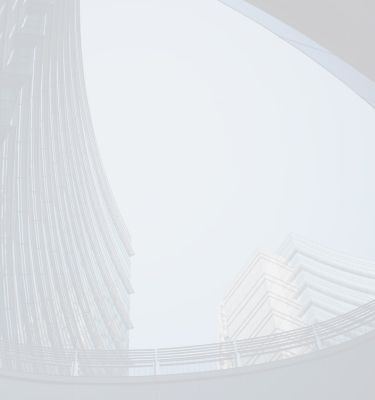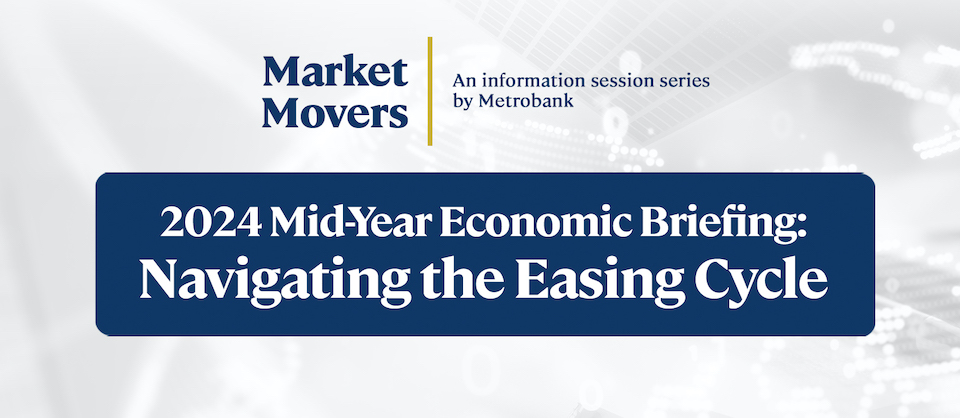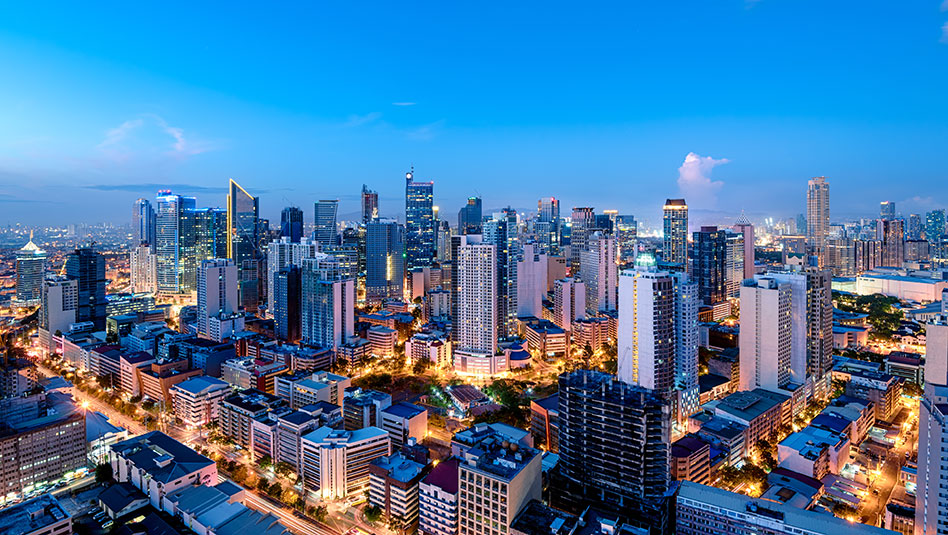Archives: CreditSights Issuer List
Access this content:
If you are an existing investor, log in first to your Metrobank Wealth Manager account.
If you wish to start your wealth journey with us, click the “How To Sign Up” button.

Fundamental View
AS OF 28 Aug 2025Pfizer has ample financial resources, strong ability to de-lever, and sizeable M&A capacity at current ratings.
Pfizer faces meaningful losses of exclusivity come the middle part of the decade. Management has guided to a ~$17 bn negative revenue impact from patent losses in 2025-30, including for drugs such as Xeljanz (2025), Eliquis (2026), Ibrance (2027), and Xtandi (2027).
Management expects to offset this impact with growth from pipeline development (+$20 bn of revenues by 2030) and business development (+$25 bn of revenues by 2030).
Business Description
AS OF 28 Aug 2025- Pfizer is a research-based, global biopharma company with focuses in immunology, metabolic disease, oncology, vaccines, neuroscience, and rare disease.
- PFE has completed a number of major acquisitions and divestitures in recent years. In 2009, the company acquired Wyeth for $68 bn, increasing its size by approximately 50%. Subsequently, PFE completed the $17 bn acquisition of Hospira, ~$12 bn acquisition of Biohaven, ~$6 bn acquisition of Arena, ~$5 bn acquisition of GBT, ~$14 bn takeover of Medivation, ~$43 bn acquisition of Seagen and $6.3 bn divestiture of its remaining stake in Haleon.
- The company has also completed the sale of its Nutrition business to Nestle for $11.9 bn and the disposition of its animal health business, Zoetis. More recently, the company executed the separation of its Consumer and Upjohn businesses through distinct transactions.
Risk & Catalysts
AS OF 28 Aug 2025Pfizer has been active with portfolio repositioning, executing the separations of its Consumer Healthcare and Established Brands (Upjohn) businesses in recent years. These transactions have resulted in weaker diversification and greater exposure to patent expirations.
Due to upcoming patent losses, Pfizer has been extremely active with M&A. The company completed the $43 bn acquisition of Seagen in December 2023, which resulted in well over a turn of leverage deterioration.
Pfizer is also exploring the sale of its hospital drugs unit. The unit was formed through the $17 bn acquisition of Hospira in 2015. We suspect that divestiture proceeds would be used primarily for business development.
Key Metric
AS OF 28 Aug 2025| $ mn | Y20 | Y21 | Y22 | Y23 | Y24 | LTM 2Q25 |
|---|---|---|---|---|---|---|
| Revenue | 41,651 | 81,288 | 101,175 | 59,553 | 63,627 | 63,833 |
| Gross Profit | 33,167 | 50,467 | 66,831 | 34,599 | 45,776 | 46,038 |
| R&D | (8,709) | (10,360) | (11,428) | (10,679) | (10,822) | (10,318) |
| SG&A | (11,597) | (12,703) | (13,677) | (14,771) | (14,730) | (13,964) |
| Adj. EBITDA | 18,027 | 33,354 | 46,153 | 22,904 | 25,866 | 26,025 |
| Total Debt | 39,836 | 38,436 | 35,829 | 71,888 | 64,351 | 61,797 |
| Gross Leverage | 2.2x | 1.2x | 0.8x | 3.1x | 2.5x | 2.4x |
| Interest Coverage | 13.1x | 26.6x | 46.8x | 39.2x | 10.2x | 11.6x |
CreditSight View Comment
AS OF 04 Nov 2025We recently shifted our recommendation on Pfizer to Market perform (from Outperform). While PFE faces growth challenges tied to losses of exclusivity (LOE) and Medicare price negotiation, the company generates strong FCF with conservative leverage metrics. We favor PFE over MRK at similar spreads, but our preference is for LLY and/or ROSW, albeit at modestly tighter levels.
Recommendation Reviewed: November 04, 2025
Recommendation Changed: September 15, 2025
Featured Issuers
Bank of Philippine Islands

SK Hynix

Hyundai Motor



How may we help you?
Search topics about wealth insights and investments.Access this content:
If you are an existing investor, log in first to your Metrobank Wealth Manager account.
If you wish to start your wealth journey with us, click the “How To Sign Up” button.

Fundamental View
AS OF 26 Aug 2025AZN enjoys one of the strongest growth profiles in our coverage, reflecting a portfolio of innovative medicines, particularly in Oncology. The addition of Alexion supports AZN’s growth prospects, bringing strong assets in immune-mediated rare diseases.
AZN also enjoys relatively strong diversification, with core sales coming from multiple therapeutic areas and with depth across its Oncology and Biopharma platforms.
AZN’s capital allocation priorities include investment in the business, the pursuit of value-enhancing M&A, and support for the dividend.
Business Description
AS OF 26 Aug 2025- AstraZeneca is a UK-based pharmaceutical company that researches, develops, and manufactures drugs with a focus in (i) Oncology, (ii) Cardiovascular, Renal and Metabolism (CVRM), (iii) Respiratory and Immunology, (iv) Rare Disease, and (v) Vaccines and Immune.
- AstraZeneca operates in five primary segments: Oncology, CVRM (cardiovascular, renal, and metabolism), Respiratory and Immunology, Rare Diseases, and V&I (Vaccines and Immune). AstraZeneca reported FY24 revenues of $54.1 bn, with ~41% from Oncology, ~23% from CVRM, ~15% from Respiratory and Immunology, and ~16% from Rare Diseases.
- In recent years, AstraZeneca has acquired Alexion for ~$39 bn, CinCor for ~$1.8 bn, Fusion for ~$2 bn, Neogene for $320 mn, TeneoTwo for ~$100 mn with future contingent milestone payments of up to $1.1 bn, Gracell for ~$1 bn, Icosavax for ~$800 mn and Amolyt for $800 mn.
Risk & Catalysts
AS OF 26 Aug 2025Given that AZN’s leverage has been largely restored to pre-Alexion levels, we expect limited deliberate improvement from here. However, we expect future shareholder rewards and business development to be managed somewhat conservatively.
AstraZeneca has shown discipline with respect to leverage and capital allocation in recent years. While AstraZeneca pays a relatively aggressive dividend (~32% of LTM FCF), the company has historically been very conservative with share repurchases and has even used share issuance to fund certain acquisitions.
AZN recently lost a patent-infringement lawsuit against Samsung Biologics regarding a biosimilar version of Soliris.
Key Metric
AS OF 26 Aug 2025| $ mn | Y20 | Y21 | Y22 | Y23 | Y24 | LTM 2Q25 |
|---|---|---|---|---|---|---|
| Revenue | 26,617 | 37,417 | 44,351 | 45,811 | 54,073 | 56,501 |
| Gross Profit | 21,318 | 24,980 | 31,960 | 37,543 | 43,866 | 45,981 |
| R&D | (5,991) | (9,736) | (9,762) | (10,935) | (13,583) | (14,499) |
| SG&A | (11,294) | (15,234) | (18,419) | (19,216) | (19,977) | (19,909) |
| Adj. EBITDA | 8,680 | 11,506 | 14,507 | 15,641 | 18,208 | 19,236 |
| Total Debt | 19,699 | 29,794 | 28,279 | 27,494 | 28,843 | 31,206 |
| Gross Leverage | 2.3x | 2.6x | 1.9x | 1.8x | 1.6x | 1.6x |
| Interest Coverage | 11.8x | 16.0x | 17.1x | 14.5x | 13.9x | 14.2x |
CreditSight View Comment
AS OF 06 Nov 2025We acknowledge that AZN trades quite tight, however, we favor it versus peers such as MRK and BMY given its better growth profile and lower risk of leveraging M&A.
Recommendation Reviewed: November 06, 2025
Recommendation Changed: April 01, 2021
Featured Issuers
Bank of Philippine Islands

SK Hynix

Hyundai Motor



How may we help you?
Search topics about wealth insights and investments.Access this content:
If you are an existing investor, log in first to your Metrobank Wealth Manager account.
If you wish to start your wealth journey with us, click the “How To Sign Up” button.

Fundamental View
AS OF 22 Aug 2025Stryker benefits from a leading position in orthopedics as well as strong franchises in medical surgery and neurotechnology. The company’s sales and EBITDA growth trajectory bests most of its medical device peers.
Stryker has exhibited discipline with capital allocation. Following larger bolt-on deals in 2022 (Vocera, $3.1 bn) and 2020 (Wright Medical, $5.4 bn) management prioritized debt reduction.
We expect SYK to manage leverage in the low- to mid-2x range as it addresses its M&A needs/wants in the aftermath of the Inari purchase.
Business Description
AS OF 22 Aug 2025- Stryker (SYK) is a global manufacturer of implants used in joint replacement & trauma surgeries; surgical equipment & surgical navigation systems; endoscopic & communications systems; patient handling & emergency medical equipment; neurosurgical, neurovascular & spinal devices among other products. Stryker generated $22.6 bn of revenues in 2024 (versus $20.5 bn in 2023).
- SYK maintains two operating segments: MedSurg & Neurotechnology (60% of 2024 consolidated revenues) and Orthopaedics & Spine (40%).
- SYK's recent sizable acquisitions include: Inari Medical ($4.9 bn) in 2025, which increased its exposure to peripheral vascular diseases; Vocera ($3.1 bn enterprise value) in 2022, which increased its digital care coordination and communication categories; Wright Medical ($5.6 bn including debt) in 2020, which increased its exposure to the trauma & extremities end market; and K2M Group ($1.4 bn) in 2018, which boosted the spine portfolio.
Risk & Catalysts
AS OF 22 Aug 2025Stryker is exposed to medical procedure volumes. While volumes have been positive, owing in part to the resumption of procedures deferred during COVID, volatility could result from economic uncertainty in the year ahead.
Stryker’s M&A interest has leaned bolt-on in nature over the past several years, including the acquisitions of Inari in 2025 ($4.9 bn), Vocera in 2022 ($3.1 bn) and Wright Medical in late 2020 ($5.4 bn).
Last quarter SYK announced a definitive agreement to sell its US Spinal Implants business to Viscogliosi Brothers to create a newly formed company (to be named VB Spine, LLC).
Key Metric
AS OF 22 Aug 2025| $ mn | Y21 | Y22 | Y23 | Y24 | LTM 2Q25 |
|---|---|---|---|---|---|
| Revenue | 17,108 | 18,449 | 20,498 | 22,595 | 23,818 |
| Gross Profit | 10,968 | 11,578 | 13,058 | 14,440 | 15,276 |
| R&D | (1,235) | (1,454) | (1,388) | (1,466) | (1,547) |
| SG&A | (6,427) | (6,455) | (7,121) | (7,687) | (8,398) |
| Adj. EBITDA | 4,753 | 4,755 | 5,356 | 6,163 | 6,558 |
| Total Debt | 12,479 | 13,048 | 12,995 | 13,597 | 16,580 |
| Gross Leverage | 2.6x | 2.7x | 2.4x | 2.2x | 2.5x |
| Interest Coverage | 14.1x | 14.1x | 15.0x | 15.6x | 16.6x |
CreditSight View Comment
AS OF 31 Oct 2025We maintain our Outperform recommendation on Stryker. SYK exhibits organic growth on strong procedural volumes and relatively healthy capital equipment spending. We would take the spread pickup offered on SYK versus MDT, a name with a weaker organic growth trajectory and similar leverage.
Recommendation Reviewed: October 31, 2025
Recommendation Changed: May 03, 2022
Featured Issuers
Bank of Philippine Islands

SK Hynix

Hyundai Motor



How may we help you?
Search topics about wealth insights and investments.Access this content:
If you are an existing investor, log in first to your Metrobank Wealth Manager account.
If you wish to start your wealth journey with us, click the “How To Sign Up” button.

Fundamental View
AS OF 22 Aug 2025- HCA’s volume metrics and EBITDA margins consistently best industry peers, primarily due to strong operational efficiency and an inpatient/outpatient focus within large, healthy markets.
- HCA’s credit metrics have improved in recent years and leverage sits near the low end of management’s target net leverage range of 2.75-3.75x.
- HCA benefits from substantial financial flexibility provided by strong FCF generation and easy access to the capital markets. The company also maintains sufficient liquidity with a well-laddered maturity schedule.
Business Description
AS OF 22 Aug 2025- HCA operates more than 190 hospitals with ~50k beds and 124 freestanding surgery units (as of 2Q25). The company operates in 20 states and England, but ~50% of its hospitals are located in Texas and Florida. HCA is the largest for-profit hospital operator in the US by revenue. HCA also purchased 41 urgent care centers in Texas from FastMed for an undisclosed amount.
- HCA has gone private twice since its initial public offering in 1969, most recently in 2006. During periods of private ownership the company has engaged in debt-financed special dividends. HCA returned to public ownership in 2011.
- HCA has been an active consolidator in the industry, acquiring General Health Services, Columbia Healthcare, Hospital Affiliates, and Healthcare Corp, among others. In rationalizing its offering of services and market focus, HCA has sold or spun-off hospital groups such as LifePoint, Triad, and HealthTrust.
Risk & Catalysts
AS OF 22 Aug 2025- We see some risk of choppy operating performance tied to an unwind of acuity and payor mix benefits experienced through COVID.
- HCA guides to FY25 revenue growth of 4.8-7.6% and adjusted EBITDA growth of 5.9-10.2%. Management reported an 1% YoY decline in 2Q25 contract labor costs and with expectations of this trend to continue through FY25.
- HCA is exposed to certain provisions in the Big Beautiful Bill which could result in insured coverage losses and lower supplemental payments.
- HCA’s board recently authorized an additional $10 bn share repurchase program (with a significant portion expected to be completed in FY25).
Key Metric
AS OF 22 Aug 2025| $ mn | Y20 | Y21 | Y22 | Y23 | Y24 | LTM 2Q25 |
|---|---|---|---|---|---|---|
| Revenue | 51,533 | 58,752 | 60,233 | 64,968 | 70,603 | 72,698 |
| SWB | 23,874 | 26,779 | 27,685 | 29,487 | 31,170 | 31,913 |
| Supplies | 8,369 | 9,481 | 9,371 | 9,902 | 10,755 | 11,058 |
| Adj. EBITDA | 10,037 | 12,644 | 12,067 | 12,726 | 13,882 | 14,561 |
| Total Debt | 31,004 | 34,579 | 38,084 | 39,593 | 43,031 | 44,519 |
| Gross Leverage | 3.1x | 2.7x | 3.2x | 3.1x | 3.1x | 3.1x |
| Interest Coverage | 6.2x | 8.4x | 7.3x | 6.7x | 7.2x | 7.0x |
CreditSight View Comment
AS OF 27 Oct 2025We maintain an Outperform recommendation on HCA. HCA remains the strongest hospital operator in the for-profit space, exhibiting operational stability and strong FCF generation. These strengths should help the company weather policy-related headwinds in the years ahead. We see HCA as a good alternative to some of the widest BBB-rated credits in our IG Pharma universe, namely Biogen and Viatris.
Recommendation Reviewed: October 27, 2025
Recommendation Changed: May 02, 2018
Featured Issuers
Bank of Philippine Islands

SK Hynix

Hyundai Motor



How may we help you?
Search topics about wealth insights and investments.Access this content:
If you are an existing investor, log in first to your Metrobank Wealth Manager account.
If you wish to start your wealth journey with us, click the “How To Sign Up” button.

Fundamental View
AS OF 21 Aug 2025- While the profit headwind related to tariffs could become a rating event over time, we expect the rating agencies to maintain their patient stance on Hyundai based on its solid market position and healthy pre-tariff profit margins, giving the company time to implement and execute tariff mitigation strategies before contemplating negative rating actions. We note that Hyundai’s biggest mitigation strategy involving the ramp of its US-based Metaplant is already underway and should reduce its reliance on vehicle imports for the US market from 60% to 30% over time.
Business Description
AS OF 21 Aug 2025- Hyundai Motor Co., Ltd. engages in the manufacture and distribution of motor vehicles and parts. It operates through the following business areas: Vehicle, Financial and Other. The Vehicle division offers motor vehicles. The Financial division provides financing, leasing and credit cards. The Other division includes manufacture of railways. The company was founded on December 29, 1967, and is headquartered in Seoul, South Korea.
- Hyundai Capital America benefits from a support agreement with Hyundai Motor (HMC). HCA investor relations confirmed its support (keepwell) agreement contains a fixed charge coverage provision that it views as particularly strong compared to other peers.
Risk & Catalysts
AS OF 21 Aug 2025- On a combined basis, HMG’s current FY25 guidance targets FY25 wholesale unit growth of 2% to 7.4 mn units, revenue growth of 5% to 6%, and a consolidated operating profit margin of 8.8% at the midpoint of the range for YoY margin contraction of 40 bp. Kia management expects 2H25 vehicle demand in the US to decline 10% YoY, which will likely lead to a reduction in HMG’s FY25 wholesale unit target. Hyundai management stated it expects a bigger tariff impact in 3Q25 and 4Q25 than 2Q25, which we believe is likely due to a combination of vehicle tariffs being in effect for the entire quarter instead of just two months in 2Q25, along with lower volumes.
- HMG targets continued growth of NEVs in 2H25, including a target of 100% growth in HEV sales. Given the end of the US $7,500 NEV consumer tax incentive at the end of 3Q25 and expected reduced emissions standards in the US, the company plans to leverage its flexible production system for ICE and NEVs to adapt to potential demand changes. Management previously noted its Metaplant in Georgia, which was originally designed to manufacture EVs, was being retooled to also produce HEVs and could potentially produce ICE vehicles in the future.
Key Metric
AS OF 21 Aug 2025| KRW bn | FY21 | FY22 | FY23 | FY24 | LTM 2Q25 |
|---|---|---|---|---|---|
| Revenue | 94,143 | 113,718 | 130,150 | 136,725 | 141,518 |
| EBIT | 5,459 | 8,950 | 15,440 | 14,189 | 12,233 |
| EBIT Margin | 5.8% | 7.9% | 11.9% | 10.4% | 8.5% |
| EBITDA | 10,015 | 13,998 | 20,387 | 18,476 | 15,331 |
| EBITDA Margin | 10.6% | 12.3% | 15.7% | 13.5% | 8.5% |
| Total Liquidity | 19,745 | 26,639 | 26,507 | 27,488 | 22,776 |
| Net Debt | (5,202) | (11,035) | (10,916) | (11,799) | (17,730) |
| Total Debt | 12,569 | 12,940 | 12,940 | 12,940 | 5,805 |
| Gross Leverage | 1.3x | 0.9x | 0.6x | 0.7x | 0.4x |
| Net Leverage | -0.5x | -0.8x | -0.5x | -0.6x | -1.0x |
CreditSight View Comment
AS OF 14 Nov 2025We lower our recommendation on HMG notes from Outperform to Market perform based primarily on relative value following recent outperformance, tighter trading levels relative to the ICE BofAML IG Corporate index, and shorter duration of 2.6 compared to 6.6 for the broader index. We remain constructive on HMG from a fundamental standpoint based on the company’s solid global market position, our view its low-A credit rating should be secure in the near term, its growing new energy vehicle business, tariff mitigation initiative including vehicle onshoring in the US, and reduced tariff headwinds heading into 2026.
Recommendation Reviewed: November 14, 2025
Recommendation Changed: November 04, 2025
Featured Issuers
Bank of Philippine Islands

SK Hynix

Hyundai Motor



How may we help you?
Search topics about wealth insights and investments.Access this content:
If you are an existing investor, log in first to your Metrobank Wealth Manager account.
If you wish to start your wealth journey with us, click the “How To Sign Up” button.

Fundamental View
AS OF 21 Aug 2025We maintain our M/P recommendation on JD post its weak 2Q25 results; topline growth was a strong beat, but EBITDA margin materially narrowed due to hefty spending for its food delivery business; FOCF also contracted and gross debt metrics weakened, but JD still retained a strong net cash position. JD trades largely in-line to Asia A- corp which we view as fair; while we expect JD’s gross debt metrics to temporarily weaken over 2H25 due to its hefty investments into food delivery, we do not expect downgrade risk for the credit given the strong performance of its core retail and logistic segments, and we expect JD to still maintain a strong net cash position over the 12 months. Amongst the A-rated China tech credits, we continue to prefer Alibaba and Tencent.
Business Description
AS OF 21 Aug 2025- JD is one of China's leading e-commerce and retail infrastructure service providers.
- JD has a large fulfillment infrastructure which includes over 1,600 warehouses operated by the company, and 2,000 cloud warehouses operated by third-party warehouse owner-operators under JD Logistics Open Warehouse Platform. Its warehouse network had an aggregate gross floor area of approximately over 32 mn square meters, as of 31 December 2024.
- JD has 3 operating segments, namely (1) JD Retail (82% of 2Q25 revenues), which includes JD Health and JD Industrials, and the segment mainly engages in online retail, online marketplace and marketing services in China; (2) JD Logistics (14%) which includes both internal and external logistic businesses; and (3) New businesses (4%) which consist of food delivery, Dada, JD Property, Jingxi and overseas businesses.
- JD had a market capitalization of RMB 325.1 bn as of 21 Aug 2025.
Risk & Catalysts
AS OF 21 Aug 2025While Chinese regulators have adopted a friendlier stance towards tech companies, any regulatory clampdowns may still adversely affect the business of JD (e.g. antitrust rules, data security & personal data protection laws).
Intensifying competition amongst Chinese eCommerce platforms with the entrance of new live-streaming/short-form video platforms and group buying discount platforms may result in slower topline growth and weaker EBITDA margin for JD as its increase its user/merchant incentives and promotional activities to defend its market share.
There are regulatory risks involving the use of variable interest entities (VIEs) to circumvent China’s restrictions on foreign ownership of Internet Content Providers (ICPs). Specifically, VIE transactions involving “change in control” will be subject to antitrust regulatory processes.
Key Metric
AS OF 21 Aug 2025| RMB mn | FY21 | FY22 | FY23 | FY24 | LTM 2Q25 |
|---|---|---|---|---|---|
| Debt to Book Cap | 12.2% | 19.2% | 18.8% | 22.3% | 25.3% |
| Debt/Total Equity | 13.8% | 23.7% | 23.1% | 28.7% | 33.9% |
| Debt/Total Assets | 6.9% | 10.9% | 10.9% | 12.9% | 14.3% |
| Gross Leverage | 1.8x | 1.9x | 1.5x | 1.7x | 2.2x |
| Interest Coverage | 16.1x | 16.3x | 15.5x | 18.5x | 16.2x |
| EBITDA Margin | 2.0% | 3.3% | 4.1% | 4.6% | 3.6% |
CreditSight View Comment
AS OF 14 Nov 2025We maintain our U/P recommendation on JD post its weak 3Q25 results. Revenues were ahead of expectations but EBITDA margin remained very weak at 0.8% due to losses for its new business initiatives such as food delivery and international expansion, FOCF stayed negative, net cash contracted, and debt metrics worsened. We expect JD’s debt metrics to further weaken over the next 6 months, and we see reduced rating headroom for JD and expect S&P to revise its positive outlook on JD back to stable. We think JD is expensive as it trades 10-15 bp tighter than Asia A-/A corporate, in-line to BABA and only 12 bp tighter than Tencent; this is much tighter than the average spread differential of 27 bp for A3 and A1 Asia corporate; as such, we think its bond has not priced in its weaker credit outlook.
Recommendation Reviewed: November 14, 2025
Recommendation Changed: September 05, 2025
Featured Issuers
Bank of Philippine Islands

SK Hynix

Hyundai Motor



How may we help you?
Search topics about wealth insights and investments.Access this content:
If you are an existing investor, log in first to your Metrobank Wealth Manager account.
If you wish to start your wealth journey with us, click the “How To Sign Up” button.

Fundamental View
AS OF 21 Aug 2025- The Export-Import Bank of India (EXIMBK) was founded in 1982. Its credit standing is built upon the key role it plays in the promotion of India’s cross border trade and investment development, as India’s official export credit agency.
- EXIMBK is 100% owned by the Government of India. Given its crucial policy role, close governmental links and quasi-sovereign status, we view it as inconceivable that the Indian government would fail to provide EXIMBK with support in a timely manner, if needed.
Business Description
AS OF 21 Aug 2025- EXIMBK presently serves as a growth engine for the internationalization efforts of Indian businesses, facilitating the import of technology and export product development, export production, export marketing, pre- and post-shipment, as well as overseas investment.
- As at FY25, EXIMBK's loan portfolio was principally made up of export finance (65%) and term loans to exporters (21%), with the remaining 14% split among the financing of overseas investment, import finance, and export facilitation. 38% come under the policy business/face GOI risk while the remaining 62% are to the commercial business.
- By geography, the bank has a primary exposure of 31% to Africa, 59% to Asia (mainly South Asia), 7% to Europe and the Americas, and the remaining to the rest of the world.
Risk & Catalysts
AS OF 21 Aug 2025- As a quasi-sovereign issuer with backstops from the Government of India and the Reserve Bank of India (RBI), it is viewed as a proxy to the sovereign. Any downgrade to India’s sovereign rating will flow through to EXIMBK as well.
- EXIMBK’s policy role may require it to, at times, take on exposures that could lead to financial losses. This has led to poor asset quality and high impairment charges similar to the public sector commercial banks during the years leading up to the pandemic.
- Capital standing, however, is robust thanks to capital infusions from the Government of India which have been stepped up in recent years – INR 50 bn was injected in FY19, followed by infusions of INR 15 bn and INR 13 bn in FY20 and FY21 respectively. The bank received INR 7.5 bn in FY22 despite capital levels remaining strong during the year. No infusions have been made since FY23 due to the comfortable capital position.
Key Metric
AS OF 21 Aug 2025| INR mn | FY21 | FY22 | FY23 | FY24 | FY25 |
|---|---|---|---|---|---|
| Net Interest Margin (Annual) | 1.84% | 2.19% | 2.29% | 2.06% | 1.83% |
| ROAA | 0.19% | 0.54% | 1.04% | 1.43% | 1.58% |
| ROAE | 1.49% | 3.97% | 7.76% | 11.47% | 13.16% |
| Equity/Assets | 13.23% | 14.12% | 12.87% | 12.06% | 11.95% |
| Tier 1 Capital Ratio | 24.0% | 28.6% | 23.7% | 19.6% | 23.9% |
| Gross NPA Ratio | 6.69% | 3.56% | 4.09% | 1.94% | 1.71% |
| Provisions/Loans | 2.46% | 0.90% | 1.24% | 0.29% | (0.32%) |
| Pre-Impairment Operating Profit / Average Assets | 2.13% | 2.31% | 2.41% | 2.12% | 1.83% |
CreditSight View Comment
AS OF 06 Jan 2025Exim Bank of India is the country’s key policy bank with full government support. It provides financial assistance to exporters and importers with a view to promote trade in India. It is 100% owned by the Government of India (GoI) and is a proxy to the India sovereign in international debt markets (quasi-sovereign status). The bank cannot be liquidated without the government’s approval and has a track record of government capital infusions. The bank’s asset quality is back on track after some wobbles in previous years. Capital levels are strong. We maintain a Market perform recommendation on the bank.
Recommendation Reviewed: January 06, 2025
Recommendation Changed: January 04, 2021
Featured Issuers
Bank of Philippine Islands

SK Hynix

Hyundai Motor



How may we help you?
Search topics about wealth insights and investments.Access this content:
If you are an existing investor, log in first to your Metrobank Wealth Manager account.
If you wish to start your wealth journey with us, click the “How To Sign Up” button.

Fundamental View
AS OF 21 Aug 2025We lowered our recommendation on Baidu to Underperform from Market perform post its weak 2Q25 results; revenues contracted and EBITDA margin fell sharply due to low advertising monetization rate; free operating cash flow was negative for a second consecutive quarter, and net cash narrowed; we expect Baidu’s credit outlook to further weaken over the next 12 months and we see reduced rating headroom at Moody’s as we expect gross leverage to trend higher in 2H25 to 2.8x. We view its bonds as rich compared to A-rated China tech and Asia corporate peers; for example, Baidu trades only 3-5 bp tighter than Alibaba and Tencent, and it is 11/6 bp tighter than Asia A- and A rated corporates; as a gauge, the average spread differential is 23 bp for A3 and A1 rated Asian $ bonds.
Business Description
AS OF 21 Aug 2025- Founded in 2000, Baidu started out as a search engine business and began its development into artificial intelligent (AI) since 2010.
- Baidu Core is the main revenue driver of the company (80% of 2Q25 revenues) which provides search-based, feed-based and other online marketing services (total: 50% of revenues), as well as products and services from new AI initiatives (31% of revenues); Baidu's AI initiatives include AI cloud (enterprise & public sector cloud, and personal cloud), Intelligent Group Driving (Apollo Go, Apollo auto solutions, and intelligent EVs under Jidu Auto), Mobile Ecosystem (Baidu App, ERNIE Bot, Haokan and Baidu Post), and other growth initiatives (ie. Xiaodu smart devices powered by DuerOS smart assistant and AI chips).
- iQiyi accounts for the remaining revenues of Baidu; iQIYI is an online video platform with a content library that includes licensed movies, television series, cartoons, and other programs.
- Baidu launched ERNIE bot in Mar-23, a generative AI chatbot powered by ERNIE, Baidu's in-house foundation model.
- Baidu has a market capitalization of RMB 238.4 bn as of 21 August 2025.
Risk & Catalysts
AS OF 21 Aug 2025Any regulatory clampdowns abroad and domestically (e.g. potential US investment ban, antitrust rules, data security and personal information protection laws) may adversely affect the business of Baidu. The interpretation of Chinese laws and regulations involves some degree of uncertainty.
There are regulatory risks given the corporate structure which uses variable interest entities (VIEs) to circumvent China’s restrictions on foreign ownership of Internet Content Providers (ICPs).
Baidu has made significant investments into long-term AI-related projects, which may take time to turn profitable. A potential escalation of the US chip restriction could have a material negative impact its AI related business (ie. cloud, ernie bot, autonomous driving).
Key Metric
AS OF 21 Aug 2025| RMB bn | FY21 | FY22 | FY23 | FY24 | LTM 2Q25 |
|---|---|---|---|---|---|
| Debt to Book Cap | 29.7% | 28.5% | 25.0% | 22.5% | 24.4% |
| Debt/Total Equity | 42.2% | 39.8% | 33.4% | 29.0% | 32.2% |
| Debt/Total Assets | 24.1% | 23.4% | 20.8% | 18.5% | 20.4% |
| Gross Leverage | 3.3x | 2.8x | 2.2x | 2.0x | 2.5x |
| Interest Coverage | 8.2x | 11.4x | 12.1x | 13.8x | 12.8x |
| EBITDA Margin | 22.6% | 26.8% | 29.2% | 29.3% | 27.2% |
CreditSight View Comment
AS OF 19 Nov 2025We maintain our Underperform recommendation on Baidu (A3/NR/A; Stb/NR/Neg) following its weak 3Q25 results; which reported a sharper decline in revenues as its search engine revamp pressured its online ad segment; EBITDA margin fell, FOCF remained negative, and debt metrics weakened. We expect a marginal improvement to Baidu’s credit metrics in FY26, but to remain weak compared to historical levels and we see reduced rating headroom from Moody’s and Fitch. Baidu trades 7-10 bp tighter on average than Asia A- and A rated corporates which we view as rich. Compared to Alibaba and Tencent, we view Baidu as rich as it trades only ~3-13 bp wider, which is tighter than the average spread differential of 26 bp for A3 and A1 rated Asian $ bonds.
Recommendation Reviewed: November 19, 2025
Recommendation Changed: August 21, 2025
Featured Issuers
Bank of Philippine Islands

SK Hynix

Hyundai Motor



How may we help you?
Search topics about wealth insights and investments.Access this content:
If you are an existing investor, log in first to your Metrobank Wealth Manager account.
If you wish to start your wealth journey with us, click the “How To Sign Up” button.

Fundamental View
AS OF 20 Aug 2025We expect ICTSI to remain resilient amid global growth slowdown fears owing to yield improvements and strong cost control.
ICTSI has steadily deleveraged over the past 5 years which we see as prudent financial management. Yet management’s recent lean towards growth at the expense of deleveraging could restrain improvements in credit metrics.
While ICTSI is exposed to material EM-related geopolitical risks, we think its geographically diversified revenue base across 20 countries limits country-specific risks.
While sizable capex and high dividend payouts could strain ICTSI’s credit profile, we take comfort in ICTSI’s robust OCF generation that should keep FCFs positive.
Business Description
AS OF 20 Aug 2025- ICTSI develops and operates common user container terminals, with a focus on those within Origin and Destination (O&D) ports based in emerging markets.
- ICTSI provides integrated ports services that facilitate the receiving, handling and storage of cargo. These are broadly split into four streams: vessel charges (i.e. services relating to moving cargo on and off ships), yard charges (i.e. services relating to moving cargo in the container and storage yards), storage fees (i.e. services relating to cargo and container storage), and other ancillary fees.
- ICTSI currently operates across 33 port concessions in 19 countries. As of end-1H25, ICTSI's revenues are well diversified across the Asia (43%), EMEA (19%) and the Americas (38%).
- ICTSI operates its container terminals under long-dated concession agreements (typically ~25 years) with the relevant local port authorities or governments. For some concessions, fees charged to customers are regulated by the authorities that prescribe maximum price limits and, in some cases, allow for CPI-linked tariff hikes. For other concessions, fees charged are unregulated and allow for greater price-setting flexibility and volatility too.
- ICTSI is required to make periodic fee payments to the respective authorities for the right to operate the concessions. These payments are typically a combination of fixed charges and variable charges based on cargo traffic volume or gross revenues.
Risk & Catalysts
AS OF 20 Aug 2025ICTSI is exposed to EM-related geopolitical, regulatory and operating risks. That said, we think the impact is mitigated by its geographically diversified revenue base across 20 countries that limits country-specific risks.
Trade uncertainties from Trump’s policies could hamper cargo volume growth.
Growing capex tendencies and high dividend payouts could strain ICTSI’s free cash flows and credit metrics, though we think the impact is mitigated by ICTSI’s robust operating cash flow generation.
While ICTSI is exposed to FX depreciation risks as most of its revenues and cash expenses are in EM currencies, natural hedging has been fairly effective thus far.
Key Metric
AS OF 20 Aug 2025| $ mn | FY22 | FY23 | FY24 | 1H24 | 1H25 |
|---|---|---|---|---|---|
| Debt to Book Cap | 71.9% | 73.0% | 70.1% | 74.3% | 73.5% |
| Net Debt to Book Cap | 58.2% | 61.0% | 52.6% | 59.4% | 55.2% |
| Debt/Total Equity | 255.3% | 269.9% | 233.9% | 289.2% | 276.8% |
| Debt/Total Assets | 62.5% | 60.3% | 58.2% | 60.7% | 58.2% |
| Gross Leverage | 3.1x | 2.9x | 2.5x | 2.7x | 2.3x |
| Net Leverage | 2.5x | 2.4x | 1.9x | 2.2x | 1.8x |
| Interest Coverage | 4.6x | 4.4x | 4.9x | 4.6x | 5.3x |
| EBITDA Margin | 62.8% | 63.0% | 65.0% | 65.4% | 65.6% |
CreditSight View Comment
AS OF 20 Aug 2025We have a Market perform recommendation on ICTSI. We think ICTSI 2030 and 2031 trades fairly to PLDT 2031 and Globe Telecom 2030. We expect ICTSI’s credit metrics could remain improve slightly in FY25 as steady yield improvements and sturdy domestic trade activity could outweigh high capex, potential M&A, and trade uncertainties from Trump’s policies. While ICTSI is exposed to EM-related geopolitical and operating risks (notably in the Mid East and Russia-Ukraine), we believe these are mitigated by its highly geographically diversified revenues. We also expect ICTSI’s robust cash-generative business to drive positive free cash flows even amid persisting capex and dividends. We see low non-call risk for the ICTSI c.2026 perp
Recommendation Reviewed: August 20, 2025
Recommendation Changed: August 16, 2023
Featured Issuers
Bank of Philippine Islands

SK Hynix

Hyundai Motor



How may we help you?
Search topics about wealth insights and investments.Access this content:
If you are an existing investor, log in first to your Metrobank Wealth Manager account.
If you wish to start your wealth journey with us, click the “How To Sign Up” button.

Fundamental View
AS OF 20 Aug 2025We see lower non-call risk for SMC GP’s c.2025 and c.2026 perps owing to strong near-term parental funding support, its recent c.2024 perp refinancing, and recent bond exchange/tender with a new $900 mn c.2029 perp issuance.
We see an improving credit outlook for SMC GP aided by lower thermal coal input costs, new contracts, and capacity additions. Net cash inflows of $2.1-$2.2 bn from the completion of an LNG deal is also positive.
While SMC GP improved its cost passthrough contractual mix from end-FY23 onwards, the company still remains exposed to high thermal coal input costs (~40-50% of contracts).
SMC GP incurs sizable capex that has led to additional debt incurrence and elevated credit metrics.
Business Description
AS OF 20 Aug 2025- SMC GP is a leading power generation and distribution company in the Philippines. Its total generation capacity stands at 4.7 GW, accounting for ~20% of the national grid.
- The bulk of its revenues is derived from power generation (~82%), with the remainder from electricity distribution and retailing (~18%).
- It operates 7 power generating plants across diversified energy sources, comprising coal (~62%), natural gas (~25%), hydro (~12%) and battery energy storage (~1%).
- Through long-term power supply agreements and retail supply contracts, SMC GP either sells electricity directly to customers (including large Philippines power distribution company Manila Electric Company, distribution utilities and other industrial customers), or through the Philippine Wholesale Electricity Spot Market.
- SMC GP acts as the Independent Power Producer Administrator (IPPA) for three power plants (~54% of total capacity), where it has the right to sell electricity generated by the IPPs without having to bear large upfront capital expenditures for plant construction and maintenance.
- SMC GP also distributes and retails electricity services through its wholly-owned subsidiary Albay Power and Energy, which distributes power in the province of Albay, Luzon.
- SMC GP is a wholly-owned unlisted subsidiary of San Miguel Corporation, one of the largest and most diversified conglomerates in the Philippines based on total revenues and assets.
Risk & Catalysts
AS OF 20 Aug 2025SMC GP still has $307 mn/$1.2 bn of c.2025 and c.2026 perps outstanding to be addressed, though we see low non-call risks.
A moderate portion of SMC GP’s off-take contracts do not contain cost pass-through mechanisms. This exposes the company to a rise in thermal coal input costs that could squeeze its EBITDA margins.
SMC GP incurs sizable capex that has spurred additional debt incurrence. Consequently, its credit metrics remain elevated.
Over 80% of SMC GP’s installed capacity is thermal coal or gas-fired, which may be viewed unfavorably from an ESG perspective.
Key Metric
AS OF 20 Aug 2025| PHP bn | FY22 | FY23 | FY24 | 1H24 | 1H25 |
|---|---|---|---|---|---|
| Debt to Book Cap | 69.2% | 62.8% | 64.4% | 62.8% | 59.5% |
| Net Debt to Book Cap | 66.4% | 59.4% | 57.7% | 60.9% | 50.5% |
| Debt/Total Equity | 224.6% | 168.7% | 181.2% | 169.2% | 146.7% |
| Debt/Total Assets | 79.0% | 73.8% | 73.8% | 72.1% | 68.4% |
| Gross Leverage | 19.4x | 12.9x | 11.9x | 10.7x | 10.4x |
| Net Leverage | 18.6x | 12.2x | 10.7x | 10.4x | 8.8x |
| Interest Coverage | 1.4x | 2.2x | 2.3x | 2.4x | 2.2x |
| EBITDA Margin | 13.2% | 26.4% | 26.6% | 30.1% | 37.4% |
CreditSight View Comment
AS OF 26 Nov 2025We maintain our Market perform recommendation on SMC GP, and prefer its c.2029-2030 perps. SMC GP’s c.2026 perps already trade close to par, indicating low non-call concerns among investors and us, post multiple bond exchange and tender offers. We are comfortable with SMC GP’s improving credit outlook, completion of the $3.3 bn LNG deal, parental support, and management’s willingness and ability to repay the perps. We like SMC GP’s c.2029-2030 perps for their high coupons, and we see the ~8% yields as attractive for a S&SEA HY credit with improving fundamentals. That said, key risks include any weakening of parental funding support (due to SMC’s own sizable infra capex) and overly aggressive capex.
Recommendation Reviewed: November 26, 2025
Recommendation Changed: October 02, 2025
Featured Issuers
Bank of Philippine Islands

SK Hynix

Hyundai Motor










 DOWNLOAD
DOWNLOAD



